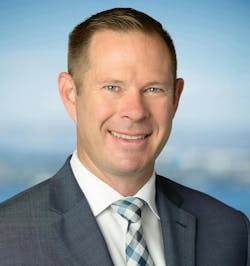The Experts Agree: Microgrids Are Gaining Momentum, but Customers still Face Challenges
The microgrid industry has gained considerable momentum in recent years, however, microgrid customers still face a number of challenges that must be overcome for the industry to maintain, or even accelerate, that momentum through 2024 and beyond.
That’s what we heard in talking to two microgrid executives whose companies will participate in Microgrid Knowledge’s upcoming annual conference, Microgrid 2024: The Revolution in Energy, April 22-24, in Baltimore, Maryland.
Microgrids as decarbonization tools
Interest in microgrids and the development of renewable energy systems remains strong, according to Andrew Flynn, solutions architect and senior sales engineer for UL Solutions, HOMER Modeling Software. “Especially with the tax incentives available, these systems are an excellent solution for cutting carbon,” Flynn told Microgrid Knowledge.
Yet the predominant understanding of microgrids is that they are simply diesel generators that provide backup power, according to Tim Allen, CEO of PXiSE Energy Solutions.
Helping customers understand the value of microgrids, particularly renewable microgrids, as a decarbonization tool will be key to building on the momentum seen in recent years.
Renewable or carbon-free microgrids are powered primarily by renewable energy assets, such as solar. If a fossil fuel-powered generator is connected to a renewable microgrid, it is only there to provide backup power when the intermittent renewable resources cannot, Allen explained.
Relegating the fossil-fuel generator to the backup position – rather than the primary power source – not only reduces emissions but also reduces or eliminates fuel costs, providing both energy independence and reliability.
Coordinating resources
Batteries are another way to manage the intermittency of renewable microgrids, but both Allen and Flynn stressed the need to coordinate and control the use of a renewable microgrid’s resources.
“There is an ongoing need to demonstrate how energy storage can help increase reliability and resilience during power outages, offset demand charges and develop an efficient strategy for dispatching storage,” Flynn said.
For example, batteries can be used to form, firm and regulate the grid and to shift energy to match where the load is. But, according to Allen, the same set of batteries shouldn’t be tasked with doing both because if you empty the battery to match a load, it’s not available to regulate the grid.
“A good microgrid control system will understand all of the [customer’s] needs and coordinate and orchestrate the resources to make sure all the needs are met 24/7,” Allen said.
Optimizing renewable resources
Flynn agreed and stressed the importance of using software tools during the feasibility stage to model different performance scenarios.
Flynn noted that one of the top challenges he sees is a lack of understanding around how to use and size battery storage, especially as it relates to the electrification of transportation. Software tools can help customers understand the variables, he said.
“Being able to run sensitivity analysis on variables and model storage dispatching to minimize demand charges or optimize when to charge electric vehicles enables you to determine the most effective battery capacity,” he said.
Sensitivity analysis also allows you to evaluate how grid power cost and supply fluctuations, outages or weather impact the performance of your system.
“Modeling systems and simulating operations in the feasibility stage can go a long way in helping to reduce the unknown and demonstrate expected performance, which helps decision makers move forward,” Flynn said.
Regulatory and infrastructure issues
Regulatory and infrastructure issues also made the list of key challenges facing microgrid customers in 2024 and beyond. Flynn pointed to the uncertainty of state energy policies, while Allen noted that distribution system capacity limitations could continue to be a roadblock.
Unlike independent system operators (ISO), distribution system planners don’t have experience communicating with and hosting generators, Allen said. As more microgrids come online, best practices for distribution systems will need to evolve by applying some of the lessons learned by the ISO side of the house, he said.
Dive deeper into microgrid trends. Subscribe to the free Microgrid Knowledge Newsletter and register to attend Microgrid 2024: The Revolution in Energy, April 22-24, in Baltimore, Maryland.
About the Author
Kathy Hitchens
Special Projects Editor
I work as a writer and special projects editor for Microgrid Knowledge. I have over 30 years of writing experience, working with a variety of companies in the renewable energy, electric vehicle and utility sector, as well as those in the entertainment, education, and financial industries. I have a BFA in Media Arts from the University of Arizona and a MBA from the University of Denver.



